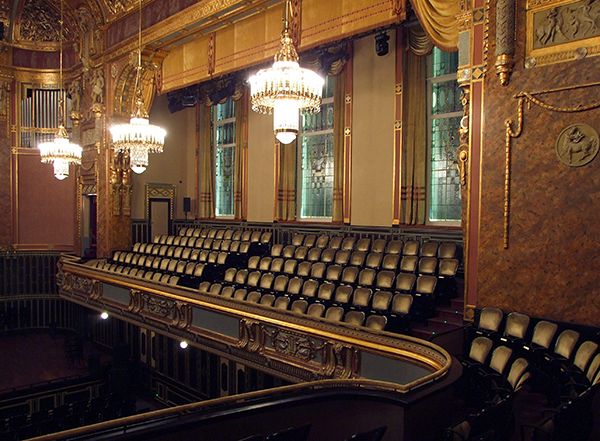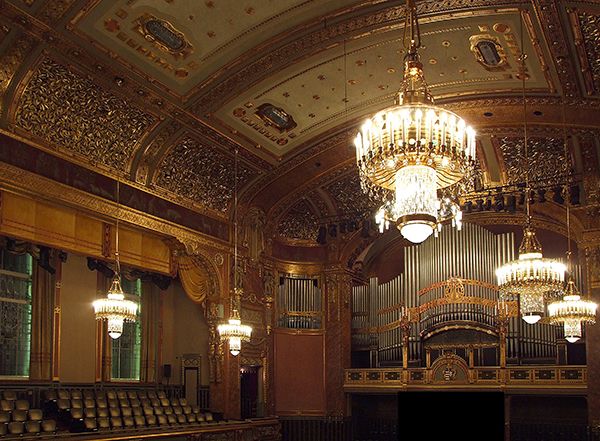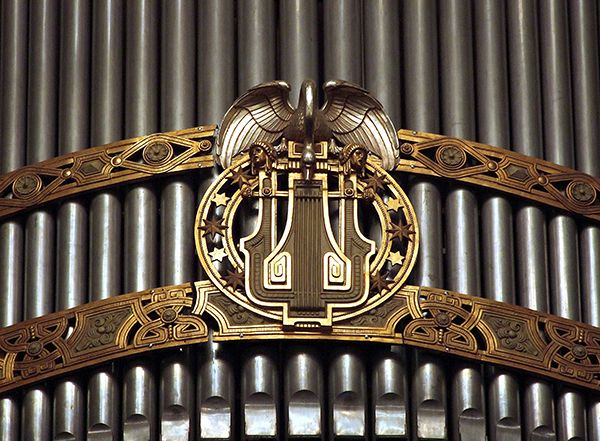The 140-year-old Liszt Academy of Music in Budapest is changing its clothes, out with the old way of experiencing classical music, in with a brand new dazzling image to attract a younger audience. The historic institution has undergone a radical makeover to survive in the 21th Century, the aim is to bring through its doors people who would rather choose Alicia Keys than the likes of Beethoven, Mozart or Brahms.
The Academy wants the pleasure of listening to classical music as well as concert-going to be a more common experience, instead of being the privilege of the elite. It’s a situation faced by classical concert halls around the world; how to remain relevant and attractive to today’s iPod generation.
The first step was to renovate the 108- year-old Secession building which reopened its gates in October 2013.
The rebirth of the Academy has not stopped at this point. Inside, both concert stages have been revamped to enable multiple contrasting or complimentary-themed productions. There have also been extensive acoustic improvements to enhance the listening experience.
The programme ranges from a wide scale of classical music, acoustic jazz with legendary artists such as Brad Mehldau, the American jazz pianist; authentic folk, baroque and contemporary music are also included.
New image
The Academy’s rebirth goes way beyond its new appearance and gleaming façade. The new image demanded creative ideas as the Liszt Academy’s budget is a tiny fraction compared to its competitors, according to Imre Szabo-Stein, the Academy´s Director of Communications. Its first efforts have already been rewarded. The Academy´s new corporate design has won the prestigious Red Dot Communication Design award in 2014.
“Here lives music – this is the message. We wanted to create a provocative, attention-grabbing film similar to what US-based star violinist Joshua Bell did with his flash mobs in the subways but with a more complex approach. It does not reflect the Academy as a whole, it targets the future audience,” he added.
The new keywords are “patina and progression”, said Imre Szabo-Stein. “The challenge was to use modern tools for showing the essence of a place which was established in 1875. Béla Bartók, Sir Georg Solti and György Ligeti finished their studies there. It also used to be one of Giacomo Puccini’s and Siatoslav Richter’s favourite stages.”
“However, the Academy’s founder, Franz Liszt’s (Ferenc Liszt) art encouraged us, he was progressive, we can say that he paved the way for show business in classical music “ added the director.
The artists also play a huge part in the wind of change. When “Chick” Corea (Grammy award-winning American jazz pianist) recently performed, he played 50 minutes more than planned and made the audience sing Bartók.
- Budapest’s Liszt Academy
PHOTO: MTVA – Csaba Jászai

- Budapest’s Liszt Academy
PHOTO: MTVA – Csaba Jászai

- Budapest’s Liszt Academy
PHOTO: MTVA – Csaba Jászai

- Budapest’s Liszt Academy
PHOTO: MTVA – Csaba Jászai

- Budapest’s Liszt Academy
PHOTO: MTVA – Csaba Jászai

- Budapest’s Liszt Academy
PHOTO: MTVA – Csaba Jászai

- Budapest’s Liszt Academy
PHOTO: MTVA – Csaba Jászai

- Budapest’s Liszt Academy
PHOTO: MTVA – Csaba Jászai

- Budapest’s Liszt Academy
PHOTO: MTVA – Csaba Jászai

- Budapest’s Liszt Academy
PHOTO: MTVA – Csaba Jászai

*Transforming traditions*
Purists have no reason to fear, as the Liszt Academy insists it will maintain a rich and varied programme to satisfy its traditional audience. As part of its 140th anniversary celebration this year, the Academy will stage reconstructions from some of its legendary concerts such as the farewell productions of Béla Bartok and Ditta Pásztory in 1940. Other highlights will include the Academy’s Symphonic Orchestra performing Liszt and Wagner, conducted by Pinchas Steinberg.
However the Academy focuses on smaller musical productions as well to provide a unique showcase with famous string quartets, solo instrumentalists.
“The result is already visible, more and more people at their 30’s are joining our audience, we are operating above the market average,” says the director. The goal of this rebel is to make the Academy “a reference point on classical music`s global map”.











